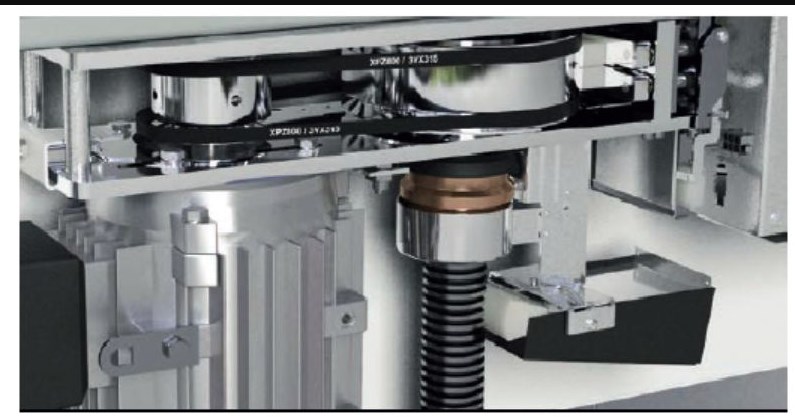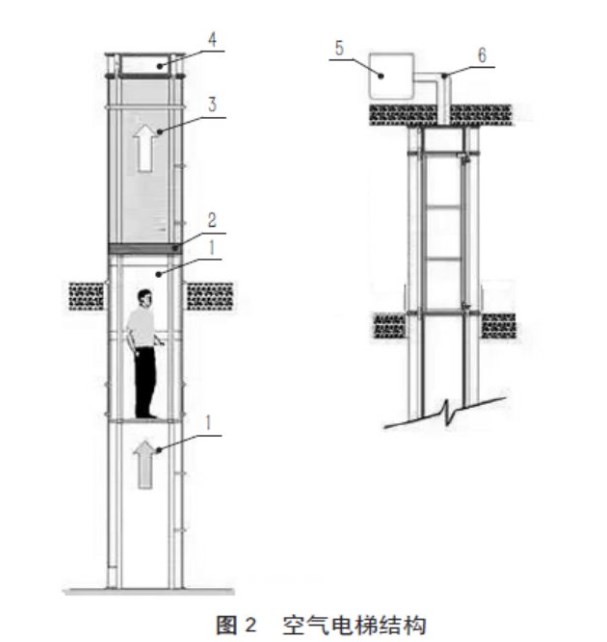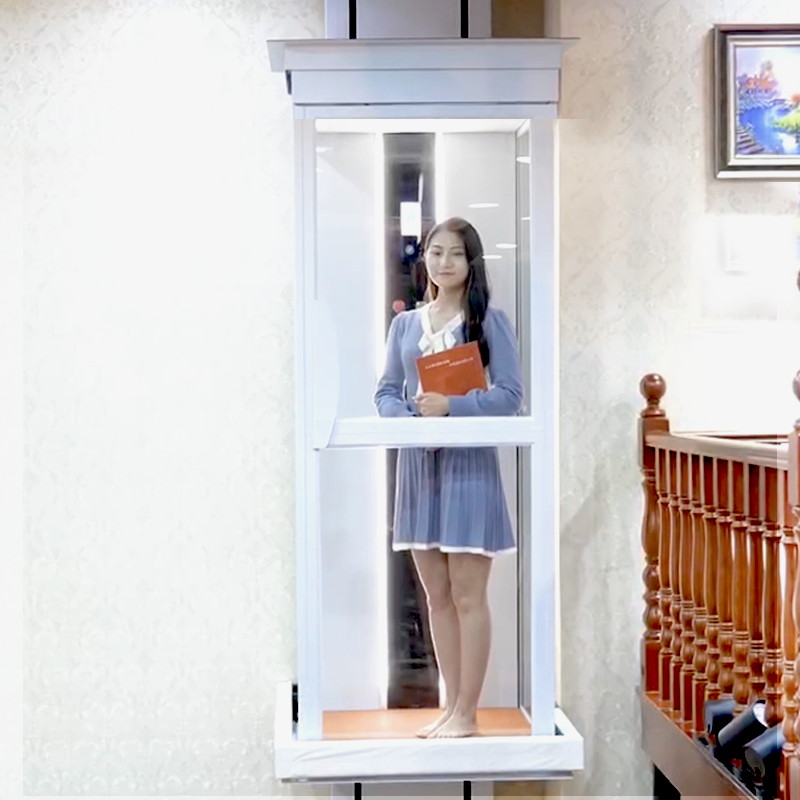With the continuous maturity of elevator-related technologies, the continuous decline of elevator costs, and the continuous growth of the aging population, home elevators have gradually become a new development direction for my country's elevator market. More and more families choose to install home elevators in villas. At the same time More and more villas have reserved elevator shafts during construction, and the number of home elevators has gradually increased, with an annual output of more than 100,000 units.
1 Special design requirements for home elevators
As a special type of elevator, home elevators have unique design requirements due to their different use environments and purposes [1].
(1) The hoistway takes up little space. Since the home elevator is installed in a private residence, the number of use
s is small, there is no need for a large-sized car,
and users do not want it to take up too much residential space, so the hoistway of the home elevator should be as small as possible.
At the same time, due to the limitation of factors such as floor height, it is impossible to provide a deep enough pit and a relatively spacious top floor space.
(2) Low speed and good comfort. Household elevators often have a small lifting height, so they can meet their use requirements
without excessive speed. Moreover, as a household appliance, they should have a good sense of comfort and avoid frequent vibrations.
(3) Low noise. The home elevator is installed in the villa, it may be next to the bedroom or the rest area, or even installed in the bedroom,
so its noise requirements are stricter than ordinary elevators.
(4) Self-rescue function [2] shall be provided. It is very likely that a family member takes the elevator alone and there is no one at home,
and the elevator fails. At this time, the elevator needs to be equipped with a self-rescue function, including a power-off re-leveling function in the case of a power failure.
Users can pass in the car. The self-rescue device makes the elevator run to the leveling position to realize self-rescue.
(5) Manual door and no car door. According to the needs of users, some household elevators use manual doors for their landing doors
and do not set up car doors. This is mainly for the purpose of saving space and cost.
(6) External telephone access function. This function is an essential function of the home elevator. When the elevator is trapped and
there is no one at home and cannot save itself, it can ask for help from the outside world in time.
2 Existing home elevators and their comparative analysis
2.1 Introduction of Home Elevator Drive Mode
Home elevators currently on the market can be divided into four types according to their driving methods: traction-driven elevators,
hydraulic-driven elevators, screw elevators, and air elevators. Traction type and hydraulic type are the two most common driving methods,
which are widely used, and their working principles will not be repeated here. The following is a brief introduction to the working principle of the screw elevator and the air elevator.
The driving principle of the screw elevator is simply to use the rotary motion between the screw and the nut to realize the up and down movement of the car.
A threaded screw is installed on the side of the car, and the nut is connected to the car.
The motor drives the nut or screw to rotate through the reducer (or belt), so that the car rises or falls with the nut.
According to the difference of rotating body and driving position, it can be divided into 3 types: driving type above the screw shaft,
driving type below the screw shaft and nut rotating type. Most of the existing screw elevators use the drive mode of nut rotation, as shown in Figure 1.

As the name implies, the air elevator uses the method of air pressure difference to realize the up and down movement of the car,
and its structure is shown in Figure 2. Now divide the hoistway into 3 parts for specific explanation. Taking the lift of the car as an example,
the hoistway is divided into atmospheric pressure area, sealed area and low pressure area from bottom to top.
The atmospheric pressure zone is directly connected to the outside world to ensure the free circulation of gas at atmospheric pressure.
The upward and downward thrust is generated by the atmospheric pressure difference between the top and bottom of the car,
thereby realizing the up and down movement of the car. The atmospheric pressure differential required to lift the car is created by an air pump located at the top of the hoistway.

3 Safety Risk Analysis of Home Elevator
According to national regulations, home elevators are not within the supervision scope of special equipment supervision,
and special equipment inspection agencies are not required to conduct inspections. At the same time, the manufacturing
standards of home elevators are recommended standards.
Elevators are "strange and strange", which brings certain safety risks to the use and maintenance of elevators.
3.1 Safety risks brought by shaft layout
The installation location of the home elevator is determined according to the different needs of each family, especially for houses without a reserved well,
the safety of the installation location is more difficult to guarantee, and some home elevators may have a space under the well that people can reach ,
and no solid pier is set, which brings a certain safety risk to the people passing under the hoistway.
3.2 Safety risks caused by small well space
The narrow shaft space is very inconvenient for the installation and maintenance of home elevators,
and home elevators often have shallow pits and insufficient height on the top floor. If the manufacturer fails to install the upper
and lower mechanical stop devices in accordance with the national recommended standards,
the elevator will be repaired. Personnel pose a great safety risk.
3.3 Safety risks caused by no shaft
In order to save costs and save floor space, some home elevators are not equipped with shafts, as shown in Figure
3. Although this kind of elevator is equipped with the function of automatically stopping when encountering obstacles, due to the inertia,
it will still cause certain damage to the obstacles when it stops, especially when the user passes above or below the running elevator,
it is inevitable that there will be bumps, The situation of tripping, and its reliability has yet to be verified, thus bringing a greater safety risk.

3.4 Safety risks brought by no car door and car wall
Doorless home elevators mainly appear in low-cost home elevators. Car doors and car walls are important safety measures
to protect passengers in the car, preventing the shear risk caused by the relative movement of the car and the well wall.
Doorless elevators Undoubtedly,
it has brought great safety hazards to passengers, but in the author's opinion, the improvement of users' safety awareness
can greatly reduce the resulting safety hazards. For example, users should stand quietly in the middle until the elevator stops. run.
3.5 Safety risks caused by no maintenance
Although home elevators are not included in the supervision scope of special equipment supervision, they still need regular maintenance
by professional maintenance units, and some users may not entrust corresponding maintenance units to carry out
elevator maintenance due to lack of knowledge. Daily inspection, regular maintenance, and the maintenance and repair of home elevators
are highly professional. Users cannot find potential fault points in time.
3.6 Safety risks brought about by personalized decoration
Home elevator users often decorate it in order to cater to the entire home environment and decoration style,
and excessive decoration will greatly change the balance coefficient of the traction elevator, affect the normal operation of the elevator,
and increase the occurrence of elevator failures
As a rapidly developing type of elevator, home elevators have attracted more and more attention from consumers.
The author introduces the special design requirements of home elevators, introduces the driving principles of screw elevators
and air elevators among the four home elevators currently on the market, and conducts a comparative study on the advantages
and disadvantages of the four home elevators, and finally analyzes the home elevators. The safety risks in the use of elevators are
hoped to have a certain reference value for consumers on how to choose home elevators and how users can reduce safety risks.
Leave a comment
your email address will not be published. required fields are marked *
You may also like
86 19963481610
Building 24, Jigao Intelligent Park, Jinan City, Shandong Province
Copyright © Wemet Lift Machinery Co., Ltd. All Rights Reserved | Sitemap Technical Support: 